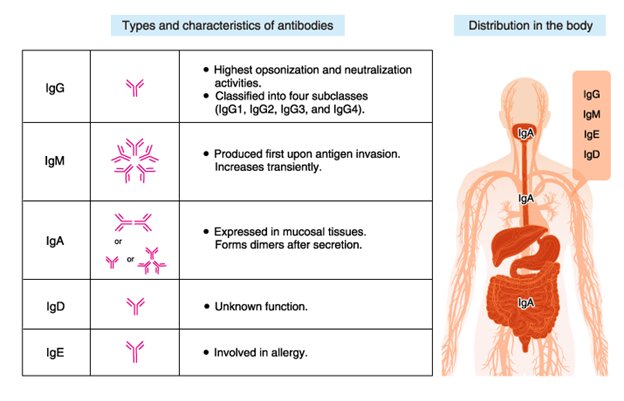Which statement by a patient makes the nurse aware of a need for further education about drug resistance in antimicrobial therapy?
"The antibiotic I have been taking doesn't work as well as it used to."
"The bacteria in my body have become resilient."
"Over time, an organism that had once been highly sensitive to an antibiotic may become less susceptible, or it may lose drug sensitivity entirely."
"My body has become resistant to the antibiotic."
The Correct Answer is D
A. "The antibiotic I have been taking doesn't work as well as it used to."
This statement shows awareness of decreased effectiveness, which can occur due to drug resistance. Bacteria can become resistant to antibiotics, leading to reduced efficacy of the medication over time.
B. "The bacteria in my body have become resilient."
This statement correctly attributes resistance to the bacteria. Resilience in this context means that bacteria have developed mechanisms to survive the effects of antibiotics, making the treatment less effective.
C. "Over time, an organism that had once been highly sensitive to an antibiotic may become less susceptible, or it may lose drug sensitivity entirely."
This statement accurately describes the concept of drug resistance. Bacteria can lose sensitivity to antibiotics, rendering the drugs ineffective against them.
D. "My body has become resistant to the antibiotic."
This statement is incorrect. It's the bacteria that develop resistance, not the patient's body. Patients don't become resistant to antibiotics; instead, bacteria evolve and adapt, making the drugs less effective against them.
Nursing Test Bank
Naxlex Comprehensive Predictor Exams
Related Questions
Correct Answer is A
Explanation
A. IgE (Immunoglobulin E): This class of antibodies is primarily involved in hypersensitivity reactions Type I, which are immediate allergic reactions. When a person is exposed to an allergen they are sensitive to, IgE antibodies on the surface of mast cells and basophils bind to the allergen. This triggers the release of inflammatory mediators like histamine, leading to allergic symptoms such as itching, hives, and in severe cases, anaphylaxis.
B. IgA (Immunoglobulin A): IgA antibodies are primarily found in mucosal areas such as the respiratory and gastrointestinal tracts. They play a role in immune defense on mucosal surfaces and are important for preventing infections. While IgA is not directly associated with hypersensitivity reactions Type I, deficiencies in IgA can sometimes lead to increased susceptibility to certain infections.
C. IgG (Immunoglobulin G): IgG antibodies are the most common type of antibody in the bloodstream and are involved in various immune responses, including defense against bacterial and viral infections. IgG antibodies are not specific to Type I hypersensitivity reactions; they are part of the immune system's broader defense mechanisms.
D. IgM (Immunoglobulin M): IgM antibodies are the first antibodies to be produced in response to an infection. They are large pentameric molecules and are effective at agglutinating pathogens. IgM antibodies are involved in the primary immune response to infections, but they are not specifically associated with Type I hypersensitivity reactions.

Correct Answer is B
Explanation
A. Wear high-top shoes to avoid tendon rupture:
This statement is incorrect. Tendon rupture is a known side effect of fluoroquinolone antibiotics like ciprofloxacin, especially in certain populations. However, wearing high-top shoes does not prevent this. Patients should be educated about the signs of tendon pain, swelling, or inflammation and should be advised to stop the medication and contact their healthcare provider if they experience such symptoms.
B. Use a barrier method of birth control (condoms) during antibiotic use:
This statement is partially correct. Antibiotics like ciprofloxacin do not interfere with the efficacy of hormonal birth control methods like pills, patches, or injections. However, it's advisable to use a barrier method like condoms as an additional form of contraception while taking antibiotics. This is to prevent potential interactions and ensure maximum contraceptive effectiveness.
C. Do not use any bronchodilator inhalers while taking the drug:
This statement is incorrect. Ciprofloxacin does not interact negatively with bronchodilator inhalers. Patients can continue using their prescribed inhalers as directed by their healthcare provider, especially if they are being used for conditions like asthma or chronic obstructive pulmonary disease (COPD).
D. Stop the medication as soon as you feel better:
This statement is incorrect. It's crucial for patients to complete the entire course of antibiotics as prescribed, even if they start feeling better before the course is finished. Stopping antibiotics prematurely can lead to incomplete eradication of the infection, potentially allowing the bacteria to develop resistance and cause a recurrence of the illness.
Whether you are a student looking to ace your exams or a practicing nurse seeking to enhance your expertise , our nursing education contents will empower you with the confidence and competence to make a difference in the lives of patients and become a respected leader in the healthcare field.
Visit Naxlex, invest in your future and unlock endless possibilities with our unparalleled nursing education contents today
Report Wrong Answer on the Current Question
Do you disagree with the answer? If yes, what is your expected answer? Explain.
Kindly be descriptive with the issue you are facing.
